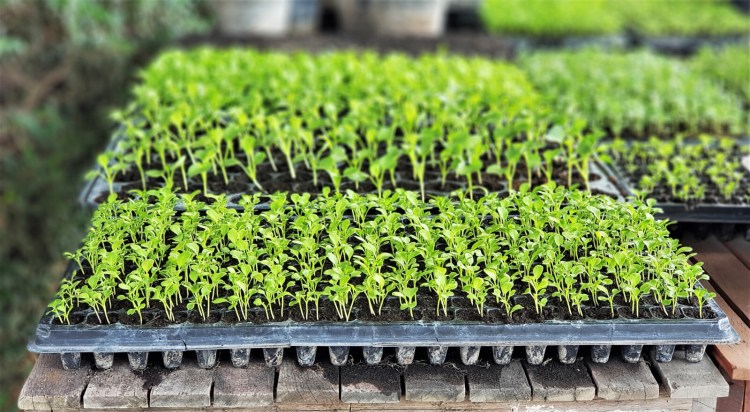At this time of year, I get the urge to grow things. But the weather refuses to cooperate.
Houseplants are nice. We also grow pots of spring-flowering bulbs indoors to add color to the house in winter. But my wife Nancy is mostly in charge of flowers, while I do most of the vegetables. So I was pleased to see the UMaine Cooperative Extension office in Falmouth offering a class on growing microgreens, then disappointed when I realized it was scheduled for a weekend when I had other plans.
Fortunately, Pamela Hargest, the educator teaching that class, kindly agreed to give me a quick microgreens-growing tutorial so I could pass the information on to you.
Chefs in urban restaurants discovered microgreens around the 1990s; they liked to use the cute, delicate greens to garnish their creations and to add fresh, strong flavors. The trend grew steadily, then exploded about 2017, when “microgreens” made it to the top of some of that year’s dining trend lists. The shoots of salad and other greens that are harvested when they are immature, microgreens are – as their name implies – tiny and (mostly) green.
Many Maine seed companies sell the seeds, but Johnny’s Selected Seeds has the largest selection, according to Hargest. If you ignore state lines and consider Vermont local, the selection at High Mowing Seeds in Wolcott is also good, she said.
You can grow microgreens in a south-facing window, but they usually do better with grow lights. “The greens can get a little spindly trying to reach for the light without them,” Hargest said.
Most people use plastic trays that are 10 by 20 inches and about an inch deep. You can buy clear plastic covers for the tops of the trays, which keep in heat and moisture, or you can wrap whatever container you use in clear plastic bags. How many trays you want to grow depends, obviously, on how much you want to eat. To start, Hargest suggested two trays at least, for a family of four or five.
Any type of potting mixture will work. Because the greens are harvested so quickly after sprouting – seven to 24 days, she said – the fertility of the mixture is irrelevant. Spread the potting mixture as evenly as you can.
Plant the type of seeds you’ll like to eat. Arugula, kale and other brassicas, radishes, lettuces and many more make for tasty microgreens. Nasturtiums, typically grown outdoors for their bright, cheerful flowers, are a good, spicy choice.
Because different seeds have different incubation times and you’ll want to harvest all the greens in one tray at the same time, Hargest suggested each tray be planted with either a single type of plant or a mix chosen by a seed company. The variety of seeds in commercial mixes are selected with an understanding of harvest times.
Place the microgreen seeds so closely together that they are almost touching. Also, put them on top of the potting mix, not buried in it. If the seeds are clumped together, spread them out a little using your fingers like the tines of a table fork. Water the seeds gently so they don’t get washed away. As they are growing, keep the seeds damp but not soggy; Hargest suggested watering every other day.
How soon to harvest is a matter of personal preference. Some people like the microgreens as soon as they get their second set of leaves, the true leaves, and are an inch or so tall. Others let them grow up to 6 inches tall, depending on the variety. Unlike some garden-grown lettuces, microgreens are not cut-and-come again; you usually cut just once, Hargest said. Some people online recommend pulling the plants and washing them before eating them, roots and all.
Microgreens make an attractive garnish for sandwiches or a cheese plate. If you grow enough of them, they also make a tasty salad, Hargest said. Quite a few can handle some heat, she said, so they can be added to soups and other dishes.
If you start microgreens now, you should be able to get a few harvests in before before your vegetable garden starts to produce full-sized greens. But just because the weather warms up doesn’t mean you need to stop planting microgreens. They’ll happily grow in a porch or shed window all year long.
Tom Atwell is a freelance writer gardening in Cape Elizabeth. He can be contacted at: tomatwell@me.com.
Send questions/comments to the editors.



Comments are no longer available on this story